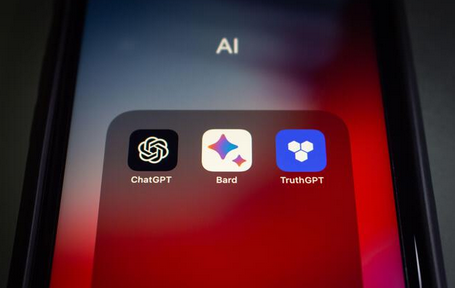Introduction
Artificial intelligence (AI) has advanced significantly over the past few years across a variety of industries, revolutionising the way people work, interact, and produce. An intriguing development is the growth of AI-powered creativity, where machines are now capable of creating art, music, and even writing. We delve deeply into the world of artificial intelligence-generated literature in this essay, highlighting Bard AI and its inventive process.
The Emergence of AI in Creative Fields
Deep learning, NLP, and machine learning algorithms have made significant strides recently, and this has led to AI’s entry into the creative domain. The astonishing potential of AI models to produce creative content has increased as they have gotten more complex. This new era is being led by Bard AI, which opens the door to the potential of an algorithmic muse and was built by a group of gifted researchers.
Understanding Bard AI
Ingenious software called Bard AI creates high-caliber, human-like literature by utilising cutting-edge machine learning algorithms. A sizable amount of text data, encompassing works from the past as well as the present and even user-generated content, was used to train it. Bard AI has acquired a thorough understanding of literary expression nuance, story structures, and language patterns thanks to this lengthy training.
The Algorithmic Muse: How Bard AI Works
Bard AI’s deep neural network, which is made up of many interconnected layers of artificial neurons, is what powers it at its heart. By processing and analysing textual data, these neurons enable the AI model to produce language that is both coherent and appropriate for the given context. Bard AI can create original and compelling literary works by making use of sophisticated algorithms and data trends.
Training Bard AI: Data and Techniques
Bard AI takes a tremendous quantity of training data to attain its outstanding creative powers. A variety of literature, from ancient books to contemporary poetry, are exposed to the model during the training process. Bard AI can comprehend numerous writing styles, genre standards, and literary approaches because to this extensive dataset. The model also goes through repeated training, with human judges providing comments to help iteratively improve its output.
Unveiling the Creative Process
Bard AI’s creative process begins with an analysis of the input when it is presented with a creative challenge. It dissects the question into its smaller parts, highlighting its main ideas, characters, or surroundings. Bard AI creates potential plotlines, dialogue, or descriptive passages by drawing on its training data. By examining several options and experimenting with language and structure, it creates an eventually cogent and captivating piece of writing.
The Impact of Bard AI on the Creative Industry
Within the creative sector, the launch of Bard AI has generated both enthusiasm and worry. It provides fresh opportunities for research and artistic cooperation, on the one hand. Using AI tools like Bard AI, authors and artists may now work together to improve their own creative processes. However, some people are concerned that AI-produced artworks can eclipse human originality or diminish the artistic endeavour. It’s still up for debate how to strike the correct mix between human creativity and AI support.
Ethical Considerations and Challenges
Important ethical questions are raised by the increase in literature produced by AI. Intellectual property rights, plagiarism, and copyright violations all become complicated problems in this environment. The authorship and veracity of works produced by AI also raise concerns. To guarantee that AI systems like Bard AI are operating within their appropriate limitations and fulfilling their obligations.
The Future of Bard AI
The future of Bard AI seems bright as long as AI keeps developing and getting better. We may anticipate ever more specialised and refined AI models thanks to ongoing research and development. Authors may find Bard AI to be a very useful tool for getting through blocks, coming up with new ideas, or even co-authoring books. Bard AI offers a distinctive creative partner, while the human touch in literature continues to be priceless.
Conclusion
To sum up, the introduction of Bard AI and its algorithmic muse has created a myriad of new opportunities for the creative sector. A new era when AI systems can produce literature that is competitive with the works of human authors has been ushered in by the fusion of artificial intelligence and human imagination.
It is important to acknowledge the part that human ingenuity plays in the creative process, even though Bard AI exhibits tremendous capabilities in producing original and captivating content. The complex feelings, unique experiences, and creative leaps that human authors bring to their writings cannot be duplicated by AI alone.
The emergence of literature produced by AI also brings up significant ethical issues. In the creative sector, issues related to authorship, intellectual property, and the limits of AI systems require serious consideration and smart solutions. To maintain the preservation and worth of human invention, a balance must be struck between AI aid and human brilliance.
Looking ahead, Bard AI and related AI systems are anticipated to keep developing and pushing the limits of what is possible in the field of artistic expression. These AI technologies can be effective partners for writers, assisting them in overcoming obstacles to their creativity, discovering fresh perspectives, and broadening their creative horizons.
In conclusion, the science underlying Bard AI’s creative process shows the potential of AI-powered creativity while pushing us to think about the wider ramifications. The coexistence of human creativity with AI has the potential to enhance the creative landscape and stimulate new kinds of artistic expression. We can navigate this fascinating new territory while retaining the importance and distinctiveness of human creation by embracing the algorithmic muse and comprehending its powers.

